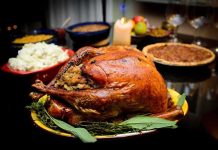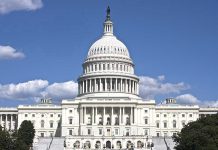
The ongoing bird flu outbreak has triggered a severe egg shortage in the U.S., leading major retailers to impose purchase limits amid soaring prices.
Key Takeaways
- Major grocery stores like Costco and Trader Joe’s are capping egg purchases.
- Significant culling of hens due to bird flu has driven up egg prices.
- The USDA predicts increased egg prices by the end of 2025.
- Restaurants and consumers are facing challenges due to egg shortages.
Retailers Impose Purchase Limits
Retailers across the United States, including Trader Joe’s, Kroger, Walmart, and Costco, have implemented egg purchase limits due to the ongoing avian flu outbreak, leading to a sharp decline in egg production. Trader Joe’s has enforced a “one carton per customer” nationwide policy. Meanwhile, Kroger, Walmart, and Costco have imposed similar restrictions, limiting customers to only a few cartons per visit. These measures are an attempt to fairly distribute the limited supply among all customers.
Grocery store shelves are increasingly bare as viral videos document frantic buying, with eggs rapidly disappearing from stocks. The restrictions on egg purchases hope to mitigate this frenzy by ensuring that more people have access to available stock. A Trader Joe’s spokesperson remarked, “We hope these limits will help to ensure that as many of our customers who need eggs are able to purchase them when they visit.”
Impact on Prices
The culling of millions of egg-laying hens across states like Maryland, Ohio, and Indiana has exacerbated supply deficiencies. Consequently, egg prices skyrocketed, with wholesale prices exceeding $8 per dozen, breaking previous records. This steep price jump is a direct outcome of the depleted hen population caused by efforts to curb the H5N1 avian flu spread. Industry experts predict egg prices will rise by an additional 20% by the end of 2025, posing added pressure on consumer budgets and restaurant operations.
Such price inflation has led businesses like Waffle House to impose a surcharge on egg-related menu items due to increased costs. Smaller eateries, struggling with supply constraints and cost pressures, also find themselves making difficult choices regarding menu pricing and ingredient sourcing.
Effects on Consumers and Restaurants
The bird flu’s disruption of the egg supply chain has had multilayered effects on households and businesses alike. Consumers face higher prices and limited availability, with grocery trips potentially yielding empty egg shelves. Restaurants, especially those with egg-centric offerings, encounter operational hurdles. Smaller establishments may grapple with adapting recipes or altering menus to balance cost with customer satisfaction.
With over 136 million birds impacted since the onset of the outbreak, experts forewarn persistent egg shortages coupled with continued market fluctuations. The egg shortage showcases the fragility of supply chains in the face of unexpected health crises, emphasizing a need for preparedness and robust measures to address future outbreaks. As avian flu continues to affect the laying hen population, stakeholders must navigate the associated challenges, balancing inventory, price, and customer demand.









